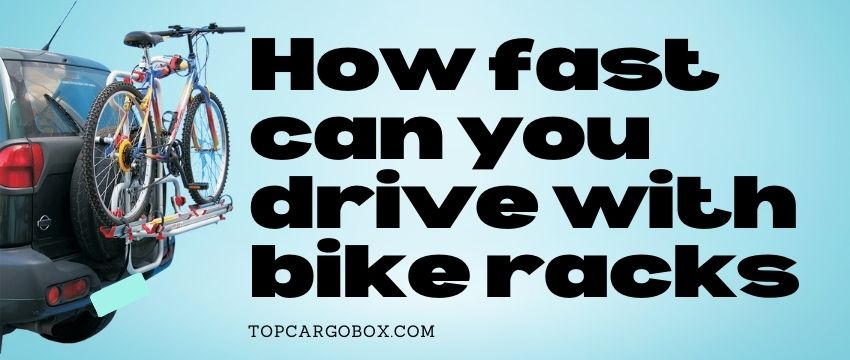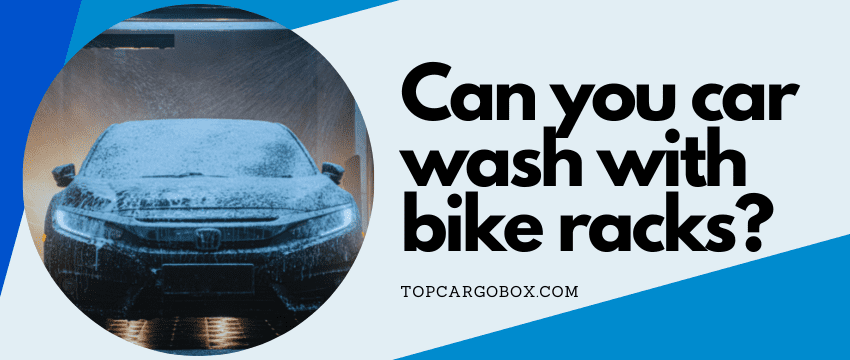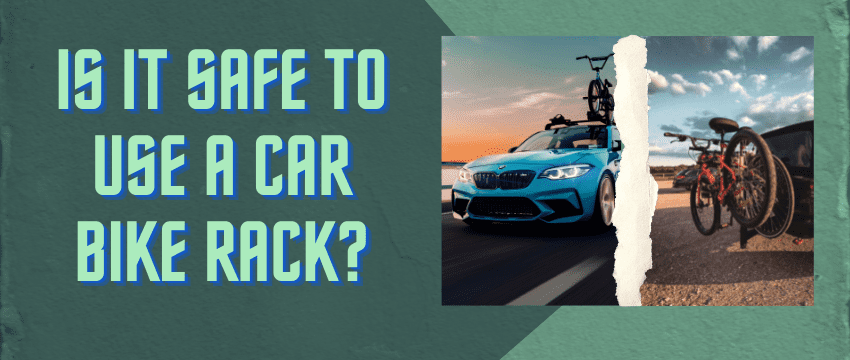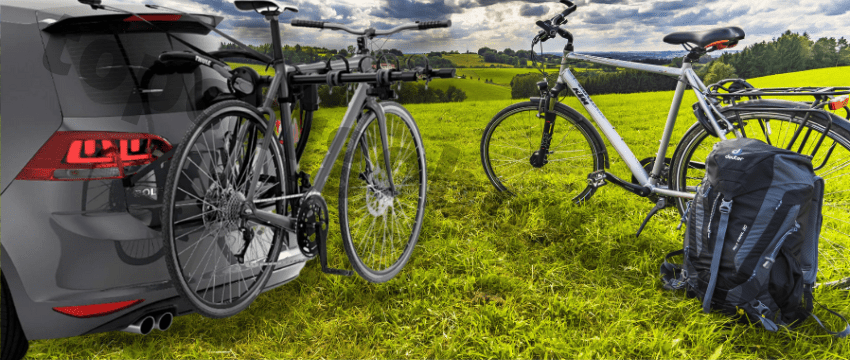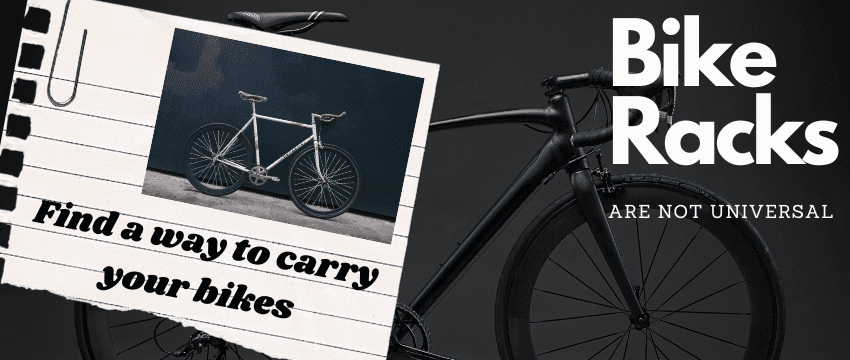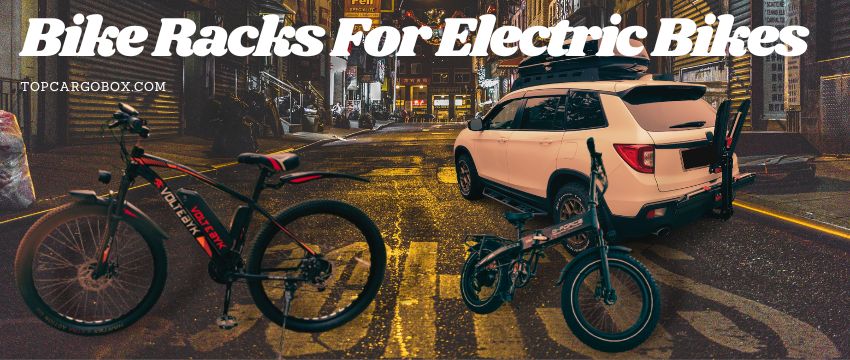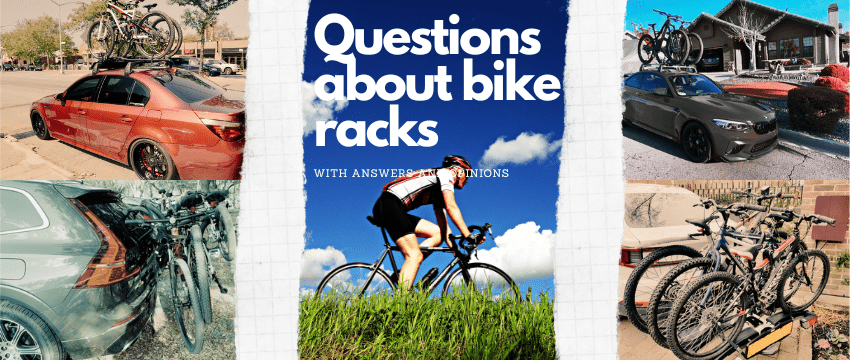More bikers want to use bike racks to transport their bicycles between their favorite cycling grounds. By using car bike racks, cyclists can easily carry their bikes on the roads without occupying the interior of their cars; therefore, it is necessary to know how fast you can drive when holding bicycles with bike racks.
We are here to collect all the information relevant to the topic and share it with you to make your bike hiking journeys more enjoyable and safe.
We don’t find specific laws that regulate the speed people should obey when transporting bikes with roof-mounted or hitch-mounted bike carriers, so we suggest you not drive faster than the speed limits below:
Trunk-mounted bike racks: no faster than 57 mph
Hitch-mounted bike carriers: no faster than 67 mph
Roof-mounted bike racks: no faster than 85 mph
As we know, you should stick to the speed limit when driving with different types of bike carriers because of potential risks and safety concerns.
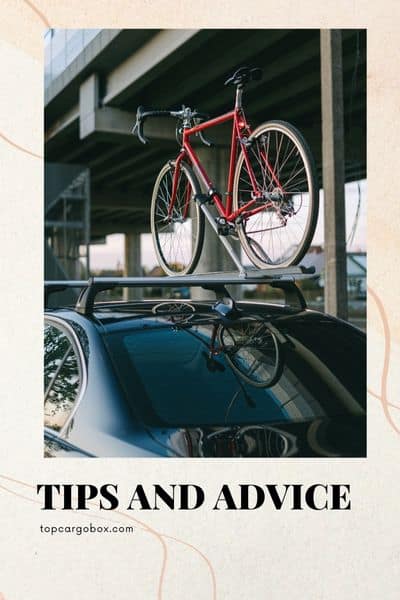
What elements affect the speed you drive with bike racks?
If you don’t understand why you should follow a speed limit to drive with bike carriers, you can read on to learn the reasons and the consequences.
Loading Capacity:
Each bike rack has a loading limit from one bike to more than 5 bikes, so you must control the speed to make your vehicle capable to stead moving with added weight. Roof-mounted bike racks usually offer one position for a single bicycle, so they are more secure than other types of bike carriers; however, when using multiple roof bike racks, you must drive slower to make your trip safer, slower than 70 mph.
Road Conditions:
Where do you go? What are the locations you marked out on the map? When driving on paved roads, you can release the speed and go faster than the limits, but 10% faster is enough to make your vehicle stand in a risky situation, especially driving with multiple bikes. If you take your family to a place with many unpaved roads, you better keep the speed 20% slower than the limits above to stay safe and keep your properties in good condition. Most experts do not recommend drivers go off-road areas with bike racks because of potential risks; moreover, some car manufacturers write in their manuals to tell customers that cargo carriers can void the car warranty. You should contact the car dealer to consult the regulations before attaching a bike carrier to your vehicle.
Weather Condition:
We cannot control the weather, so we stand with it; additionally, if you encounter extreme weather conditions like storms, snow, or heavy windy days, you must drive slowly and cautiously. When driving a car with bike racks, you have to change your habits and use long brakes and large-angle turns.
Car Engine:
What is your car’s horsepower? The horsepower tells you how strong your car is and how fast it can go with extra weight. As a result, you should check on the number and control the speed to drive with bike carriers in safe conditions. A strong engine brings more power to tow more bikes, but some weak engines won’t allow you to carry that much weight without a hassle. You should check the tire pressure and make four tires ready for added weight and stable enough to deliver everything you need to the destinations.
Road Speed Limit:
Every road has its speed limit, so you must obey the law and control your speed to avoid tickets from officers.
Installation:
Whatever types of bike racks you have there, you must accurately attach them to your cars with a final test before heading to the roads. You should install a bike carrier with someone else to ensure accuracy and security. You must check the installation and tightness before driving out with bike racks. You can use more high-quality straps to tighten bikes to bike carriers and reduce the swinging problems.
You should check the bike racks several times when driving long distances, and you must not overload bike carriers for any reason. When checking on the bike racks, you should check the tension of the mounting hardware and all straps. If possible, you can prepare some new sturdy straps in your car for emergency times.
Height and Length:
A roof-mounted bike rack gives your vehicle a new height, which you should never forget and drive carefully, especially in a place with height limitations. A hitch-mounted cargo carrier makes your car longer, so you need more space when backing up to park; moreover, you must avoid sharp turns and use large angles, especially with more than 3 bikes on a hitch-mounted bike carrier.
Do you know wind drag?
Wind dragging is a big problem for most cargo carriers, and roof-mounted racks, including bike racks, are the most wind-affected; thus, they cause loader wind noise and reduce gas efficiency more than other types of bike racks.
Why do roof-mounted bike racks cause more wind-dragging problems? Obviously, roof bike carriers mount on the roof bars, and bikes stand in the air, so bikes face the wind when the car is in motion.
We have an article that talks about some working methods to deal with wind noise, and we also have some opinions on the changes in mileage before and after using a roof-mounted cargo box.
Trunk-mounted bike racks and hitch-mounted bike carriers won’t be affected by wind because they often stand at the back of a car.
Frequently Asked Questions:
What are the consequences if someone drives very fast with a bike rack?
Bike racks cause wind dragging and change your vehicle’s gravity center, and high-speed motion can make your car out of control. Consequently, you should follow the speed limits to drive with a bike rack, especially roof-mounted racks.
If you drive a car very fast with bikes attached to it, you may increase the chances of hitting another vehicle or damaging your property. When braking a car under high-speed conditions, the mounted bikes move in the opposite direction and cause unexpected incidents if the bike racks are not sturdy enough.
What methods do you have when locking a bike to a bike rack?
You have different ways to lock a bike to bike racks, but some methods are safer than others. The best way to secure a bicycle is by using a U-lock. This type of lock is typically made of toughened steel and is difficult to cut through. Another option is to use a chain lock, which is also rugged enough to keep your bikes safe from theft.
The cable lock is affordable. These locks are not as strong as U-locks or chain locks, but they are still a good option for locking up a bicycle. You have to ensure that the chosen cable lock is strong and long enough to lock the bikes around the bike racks.
What is the best time to drive with bicycles on bike racks?
Spring is the best time for bike hiking, so you should pick a time that avoids traffic jams and choose the most fine-condition routes.
Our team is creating outdoor-gear relevant articles with passion. If our articles can help you to find the correct solutions for your questions, we will be happy about that. In the content creation process, we usually collect accurate and useful information online or offline to compile our content in an organized way. Consequently, we can guarantee that you can discover some expected answers to your questions. We appreciate your time on our site.

